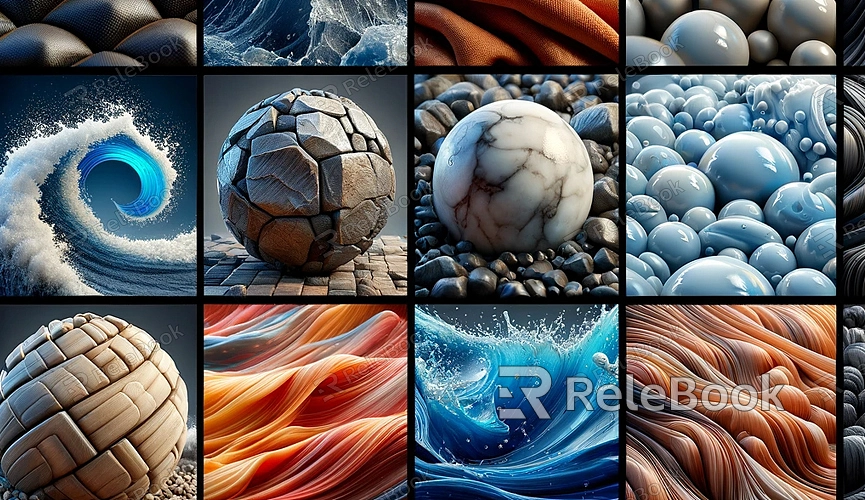What Is Texture in a 3D Model?
What Is Texture in a 3D Model? In today's realm of digital art and design, 3D models have become essential tools for creators to express their creativity and build virtual worlds. However, when discussing 3D models, a crucial element to consider is texture. This article delves into what texture in a 3D model is and its role in visual effects and rendering techniques.If you need it, I recommend downloading 3D textures from Relebook. There is no better choice than this.
1. What is Texture in a 3D Model?
In a 3D model, texture refers to the images or patterns applied to the model's surface. These images can include information such as color, lighting, reflection, and shadows, giving the model a more vibrant and realistic appearance. The introduction of texture means that the model is no longer just a geometric shape but presents a more intricate and engaging visual.

2. The Importance of Texture in Visual Effects
Texture plays a vital role in a 3D model as it adds surface details, making it look more natural and authentic. By skillfully choosing and applying textures, designers can simulate various materials like metal, wood, fabric, etc., enriching the model's appearance and enhancing the overall visual experience.
3. The Relationship Between Texture and Rendering Techniques
In the graphic rendering process, texture and rendering techniques are closely intertwined. Texture mapping allows rendering engines to consider surface variations when handling lighting and shadows, creating more realistic image effects. Through advanced texture mapping techniques, designers can precisely control light reflection and refraction, heightening the model's realism.
4. Types of Texture and the Creation Process
Textures come in various types, including color textures, normal textures, displacement textures, and more. These different texture types can affect different aspects of the model, such as color and surface relief. The process of creating textures typically involves texture mapping, UV mapping, and the use of professional software tools.
5. Future Trends in Texture Development
As technology continues to advance, the application of textures in 3D models will become more complex and intelligent. In the future, we can expect to see more advanced texture generation algorithms, breakthroughs in real-time rendering techniques, and the widespread use of higher-resolution, more realistic texture mapping, creating more captivating visual effects in digital art and virtual reality.
Texture in a 3D model is a key element in simulating real-world appearances. It not only enhances visual effects but also provides robust support for designers to create outstanding and memorable digital works.

